How-To: Convert a Porch to a Mudroom
The key to this budget-friendly and comfortable entry remodel is a new airtight and insulated floor system
By Jeremy Kassel Issue 319 – November 2023
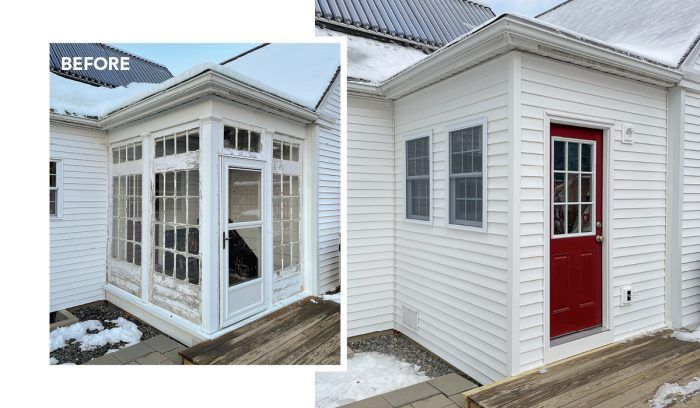
Last winter a longtime customer asked us to convert his existing porch into a mudroom. The enclosed porch, which was approximately 60 sq. ft., had single-pane windows, no wall or roof insulation, and a storm door in place of a proper entry door. A small staircase within the porch footprint provided access to the client’s home workshop, where he restores and refinishes furniture professionally. Given that the porch was almost always too hot or too cold, it was only used for accessing the backyard and the workshop. Our plan was to eliminate the staircase (with the client accessing his shop from outside the house in the future) and rebuild the porch into a semi-conditioned mudroom that would include a utility area for laundry as well as space for kicking off boots, hanging jackets, and storing hats and gloves.
As with most porches in the area, there was a step down from the house to the porch floor. We decided to raise the floor system so the mudroom would be on the same level as the rest of the house and feel like part of the original floor plan. Exploratory demolition by the homeowner revealed some problems with the original structure. The posts supporting the roof were not solid lumber but rather four 1x trim boards nailed together to create a hollow post. There were also load-carrying beams at the roof level with voids and spaces, particularly at the outside corner of the roof valley. Addressing these structural deficiencies would be part of the scope.
To keep costs down, we did not change the porch’s tongue-and-groove beadboard ceiling. We also left the existing clapboard siding as an interior wall finish, using salvaged pieces from other parts of the house for repairs. To control costs further, the client would finish the drywall, install a vinyl floor, and trim out the entry door and two windows himself.
Porch-to-mudroom conversions like this challenge the standard construction sequence because they’re often on a concrete slab or inaccessible crawlspace. In this case, the existing block foundation was in excellent condition, but there is no access from inside or outside the home. This meant we would need to install the electrical, insulation, and venting in the floor system before sheathing the floor and building the walls.
The new mudroom would have insulation but no heat source, so I wanted a robust insulation and air-sealing strategy to keep the space comfortable. The crawlspace under the porch floor was vented when we started construction, and we wanted to keep it that way. This meant we needed to insulate and air-seal the floor assembly. The 2×8 floor joists can only hold 7-1/4 in. of insulation, so we installed 2-in.-thick XPS rigid insulation ripped to fit between the joists, with mineral-wool batts on top. I love mineral wool for its fire resistance, sound-deadening characteristics, and R-value (R-4 per in.). The rigid foam provides an even greater R-value per inch (R-10 for 2 in.), and because it is sealed around the perimeter with canned spray foam, it creates an air barrier below the mineral wool. The floor assembly is approximately R-35.
We retained the two passive vents to allow seasonal drying in the crawlspace. We constructed those using the 2-in. XPS. The vents were covered with basic, aluminum, louvered register covers.
For the exterior walls we used Zip System R-sheathing (R-6.6), which has a layer of insulation built into it. With the addition of R-15 mineral-wool batts, our wall assembly is approximately R-21. Although this space isn’t fully conditioned with a heat source, because it is so well-insulated and air-sealed and has such a small footprint, it is generally comfortable and can be made more so by opening the door to the main house.
This project cost about $9000, not including the client’s labor, which easily saved a few thousand dollars. It’s always enjoyable to help a family make their house more livable, and it’s especially satisfying to do so for a reasonable sum of money.
Frame a New Floor
We considered leaving the porch’s floor joists in place and sistering taller joists or adding sleepers to raise the floor, but we found an untreated mudsill sitting on the block foundation with no sill-seal gasket. Even though there were no signs of rot, we chose to cut out the existing joists and sill plates and start fresh with a new floor system raised to match the rest of the house.
Support the roof
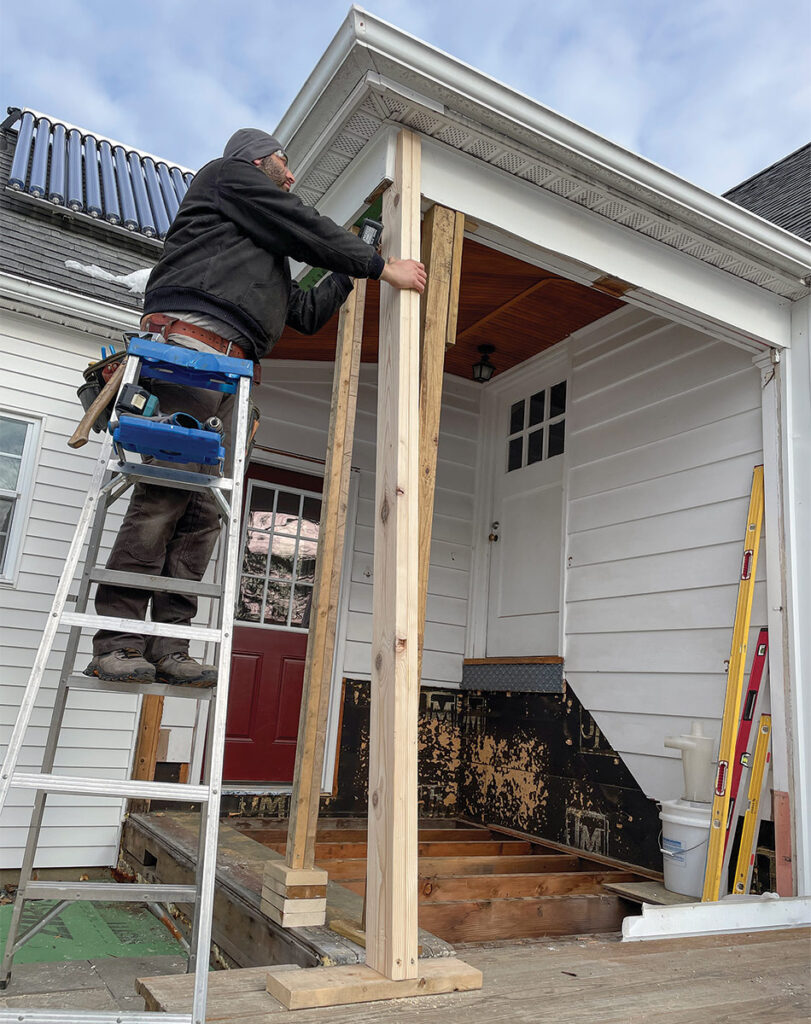
We had to temporarily support the porch roof because the posts were on top of the existing tongue-and-groove flooring. We used a two-ply 2×6 angled post with a large bird’s mouth to hold up the beam supporting the roof. With the top of the post attached to the roof beam, we drove the post inward at the bottom to take up the roof load.
Demo the floor
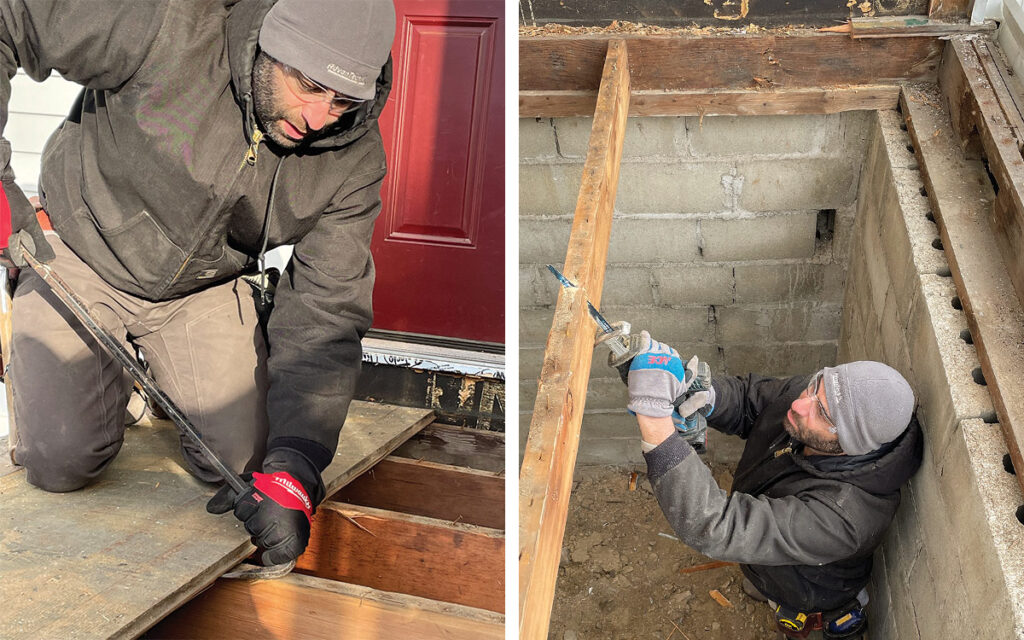
With the roof supported, we pried up the porch flooring with wrecking and flat bars. When the flooring was gone, we cut out the floor joists with a cordless reciprocating saw equipped with a demolition blade.
Start straight and smooth
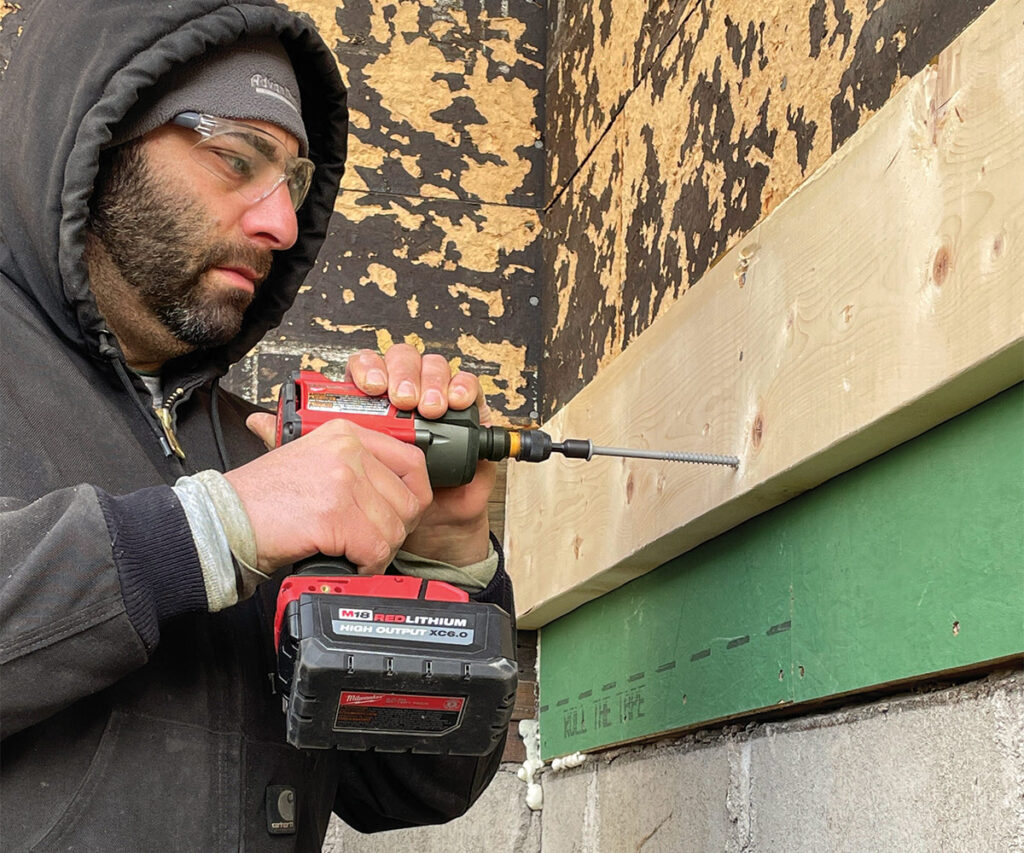
We started building a new floor by cutting a level line in the ’50s-era wood-fiber sheathing with a circular saw and removing the sheathing below the cut line. We then installed 7/16-in. Zip sheathing in place of the wood-fiber sheathing over the wall framing, followed by 2×8 ledgers fastened with structural screws. The Zip sheathing is flat and its coated surface is smooth, making it easier to air-seal.
New higher joists

We used concrete screws to fasten double 2×10 sill plates to the block foundation, followed by a 2×10 rim joist. We then hung the 2×8 floor joists from the ledger and the rim joist with joist hangers and fasteners spaced at 16 in. on center. We also added midspan blocking for additional rigidity.
Add electrical

With no access after the floor was to be sheathed, we had to run the cables under the floor for receptacles and lights before sheathing. We draped a few feet of wire outside of the rim joist to feed a new receptacle inside, and another leg of wire from that location to the adjacent rim joist to supply power to an outdoor receptacle and a switched exterior light.
Foam for a warmer floor
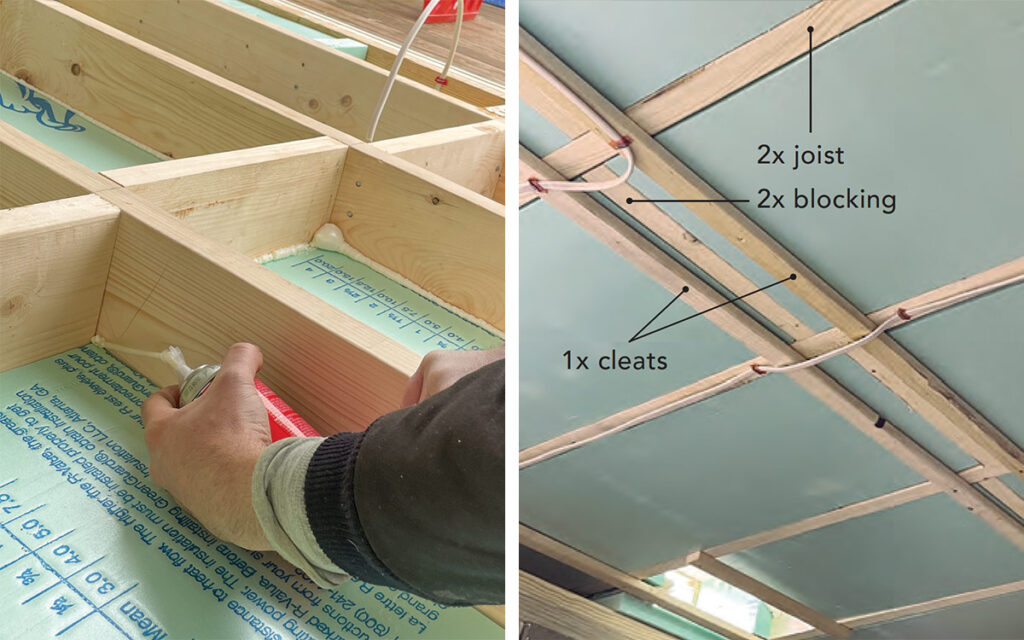
A 2-in. layer of XPS insulation boosts the floor’s R-value and creates an air barrier on the bottom of the joists. We screwed 1x cleats to the bottom side of the joists to hold the foam, then sprayed canned foam to glue the XPS in place and fill any gaps between it and the framing.
Space to breathe
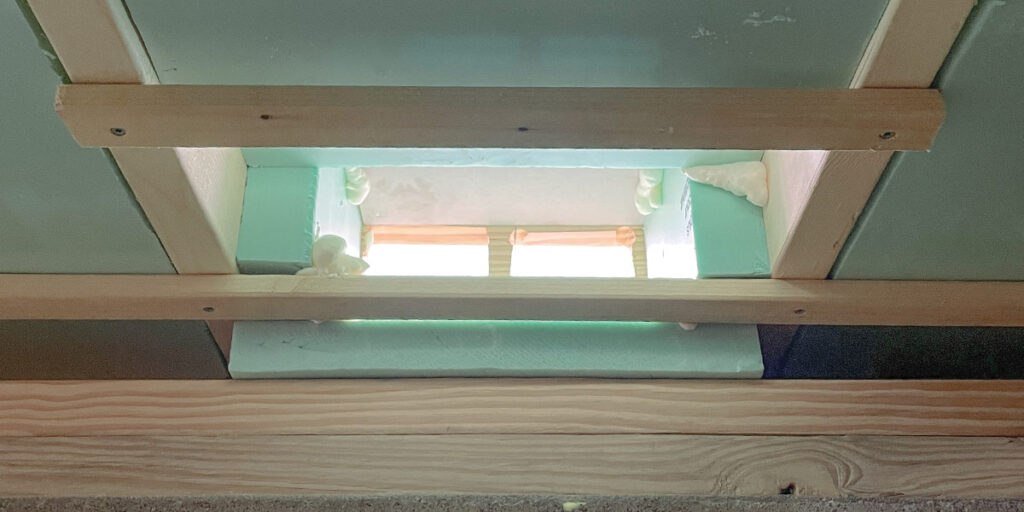
To make sure the unconditioned crawlspace would be able to dry, we added a pair of crawlspace vents through the rim joists and separated them from the insulated floor with XPS. Aluminum insect screen on the interior of each vent prevents bugs from getting inside.
Fit and fasten the subfloor

With the in-floor electrical done, we placed 5-1/2-in. mineral-wool batts atop the foam and then installed 3/4-in. subflooring using subfloor adhesive and 2-in. screws. We also had to pull the electrical cables through holes in the subfloor near where they’d enter the wall framing.
Build New Walls
After the floor was framed and insulated and the electrical stubbed up, we could build the walls. As in most remodeling situations, we built the new walls in place to make sure they followed any framing irregularities caused by seasonal movement or settling over time. Once the walls were built, we sheathed them with Zip R-sheathing and taped the seams for weather resistance and air-sealing.
Fit studs individually
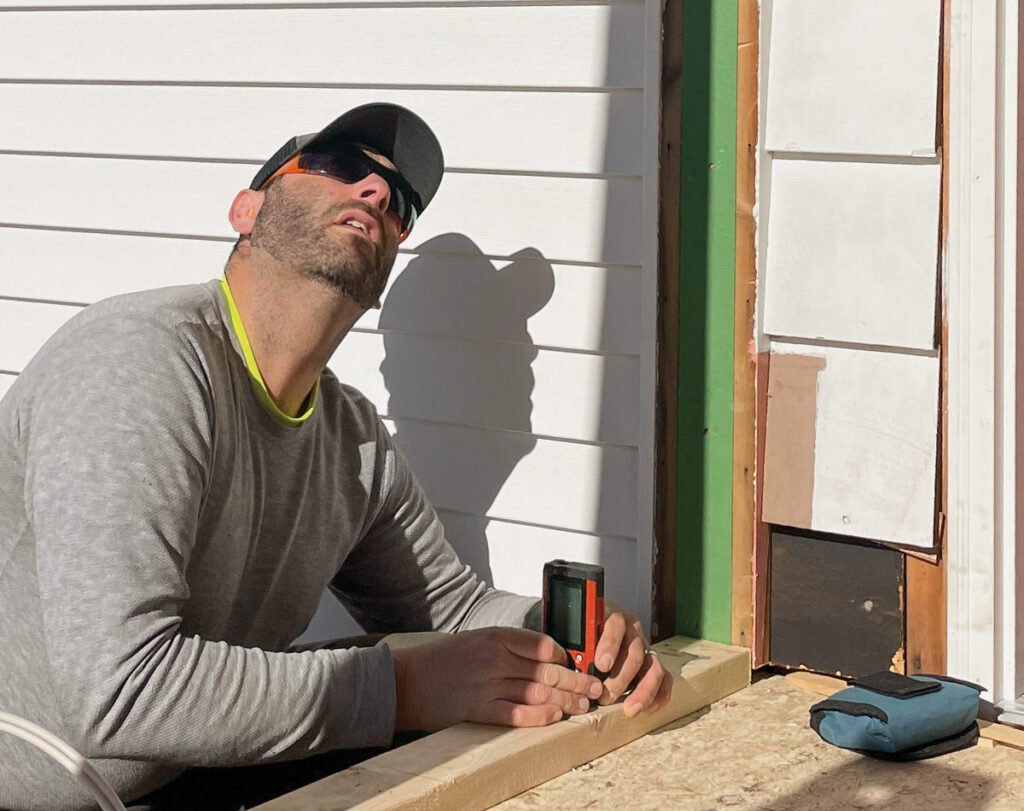
We measured each stud with a laser measurer and cut it to fit snug. In addition to ensuring that every stud was a tight fit, this method made it easier to slide the bottom plate over the long electrical cable.
Toenail the top and bottom
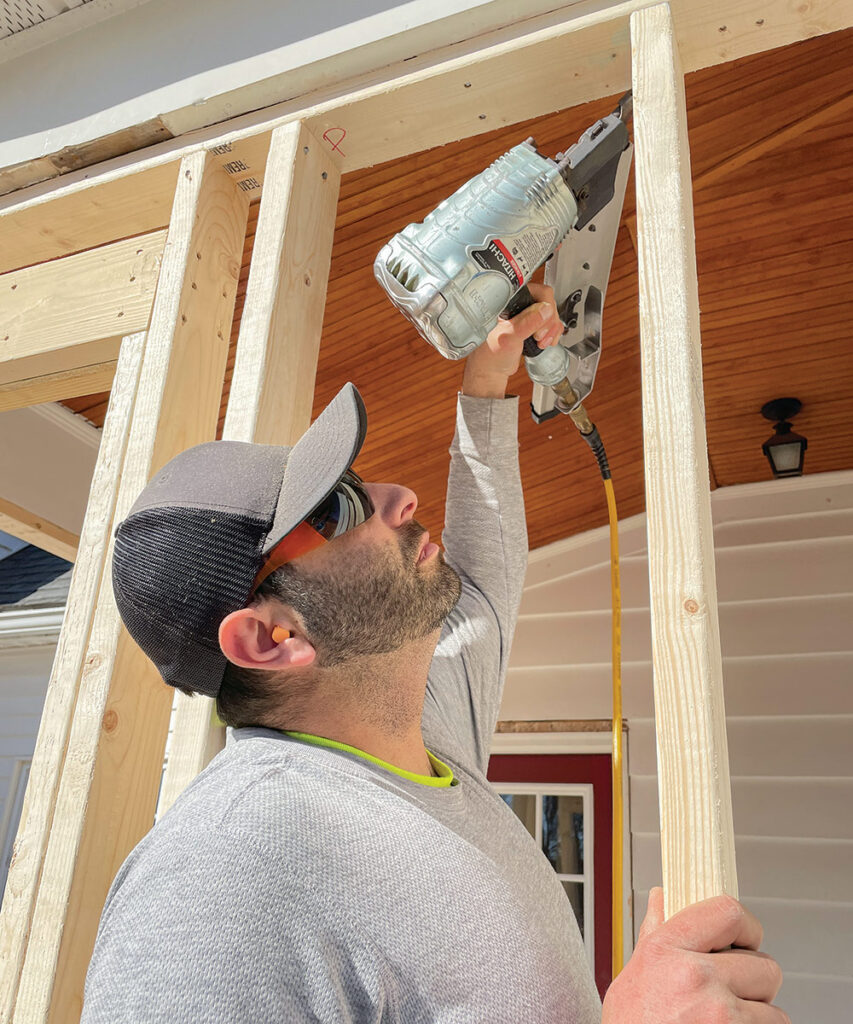
The studs and plates are held in place with 3-in. full-round-head framing nails. Building the wall in place required either toenailing or using screws at the tops and bottoms of studs to connect them to the previously installed plates.
Foam and sheathing combined
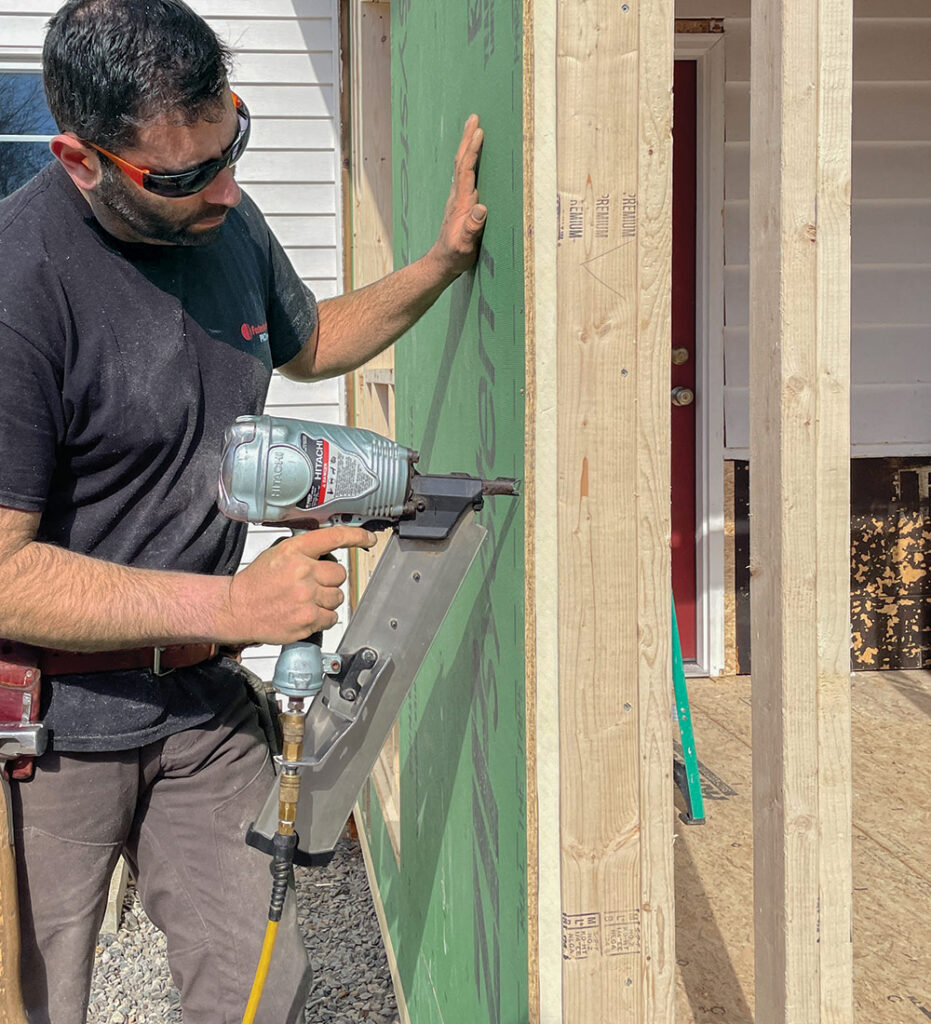
Zip System R-sheathing is an easy way to add exterior insulation under siding and beef up a wall’s performance. The foam layer slows thermal bridging through the framing, and the sheathing layer on the outside makes it straightforward to install siding, windows, and doors.
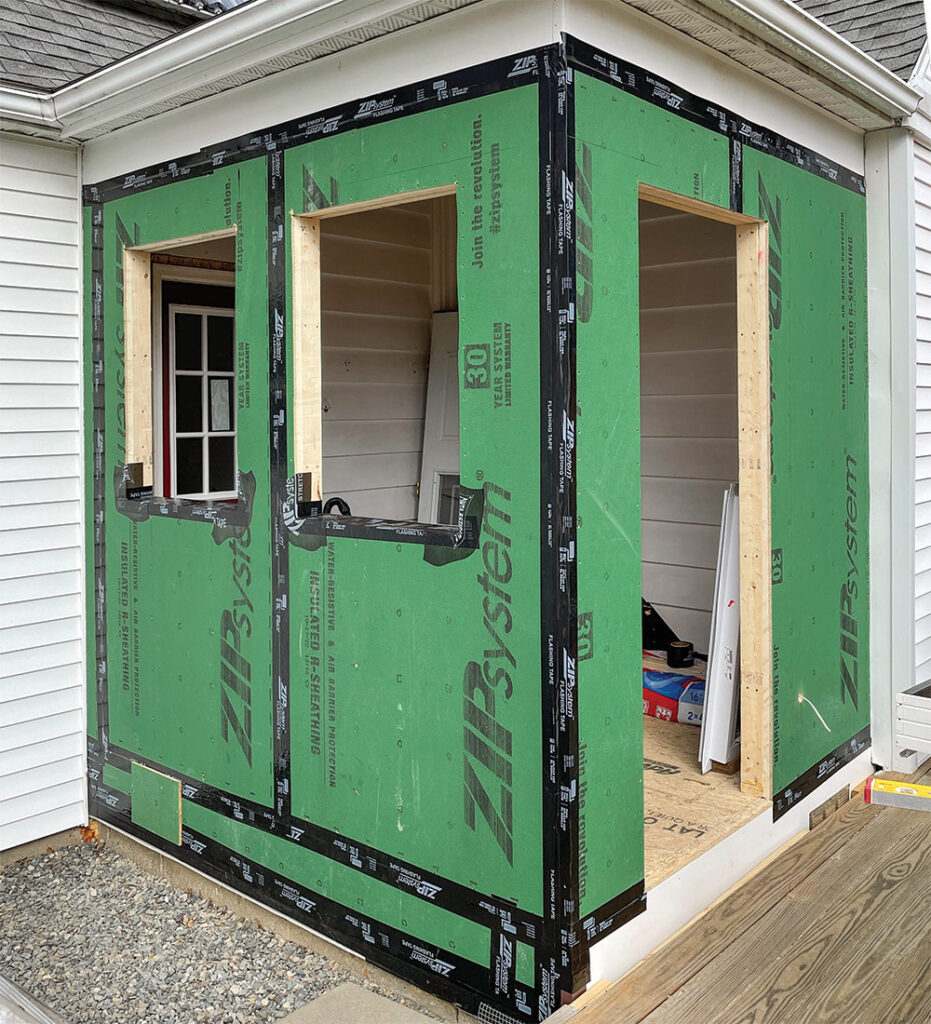
Install Windows, Doors, and Siding
The material choices were simple and inexpensive and were meant to match the aesthetic of the rest of the home. We installed basic vinyl windows, a fiberglass door, and white D-4 vinyl siding. While not fancy, these building products are affordable, quick to install, and easy to maintain and clean.
Install windows with care
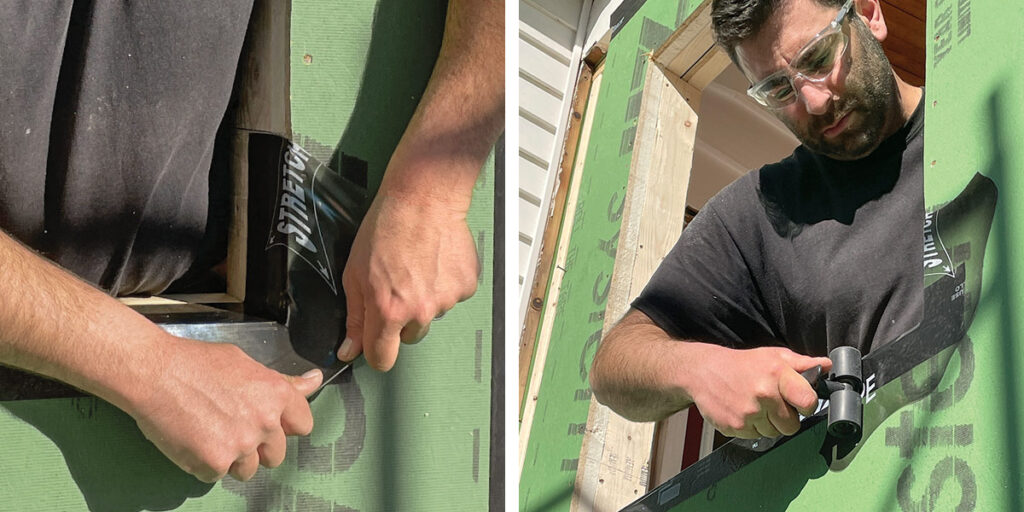
A piece of bevel siding under lengths of seam and flexible flashing tape created a waterproof sill pan.
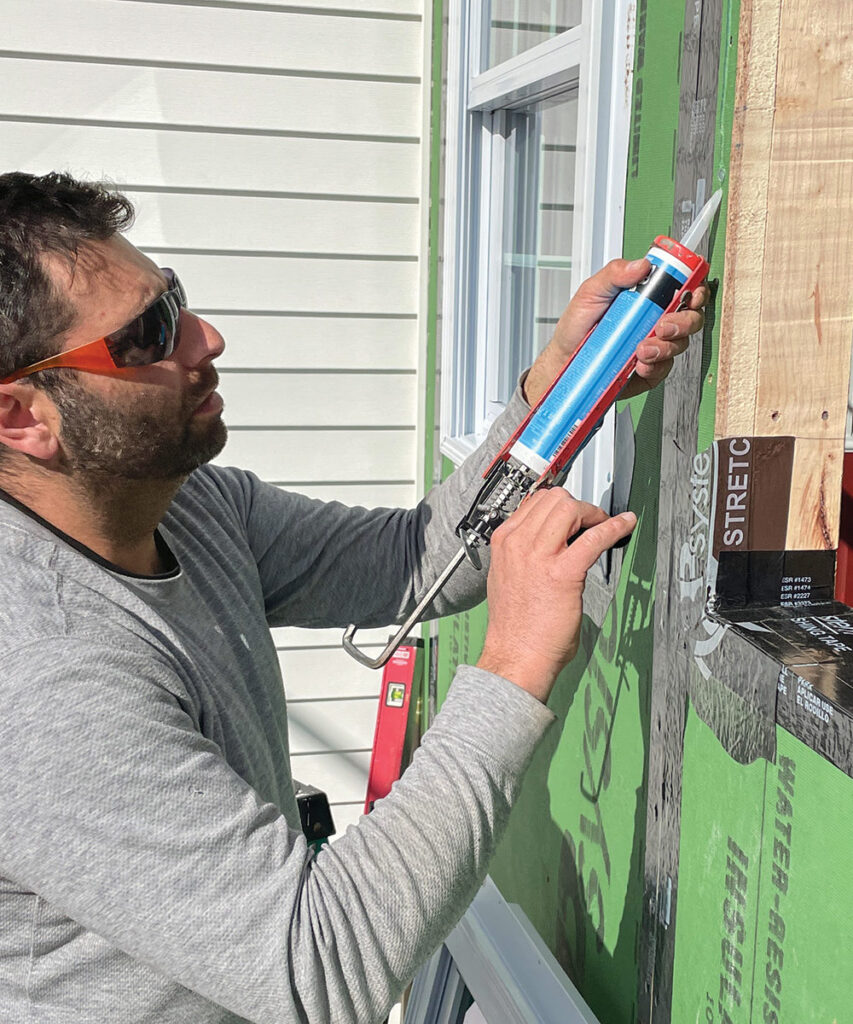
We also placed a bead of silicone sealant behind the window flange as a second line of defense against wind-driven rain and water running down the exterior.
Fasten the windows
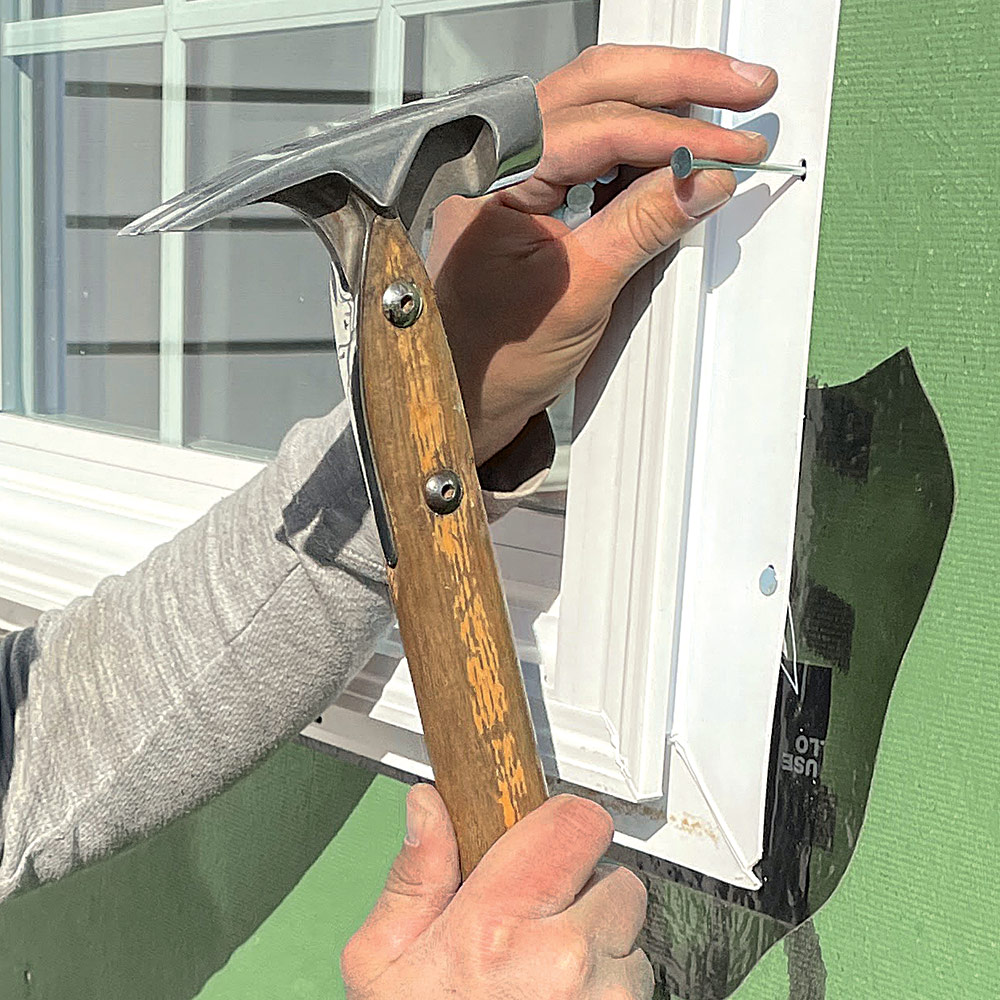
To make it through the Zip R-sheathing’s insulation layer and get into the framing, we used 3-in. galvanized roofing nails to install the windows. After they were fully nailed, we covered the nailing flange with flashing tape, leaving the bottom open for drainage.
Install accessories first
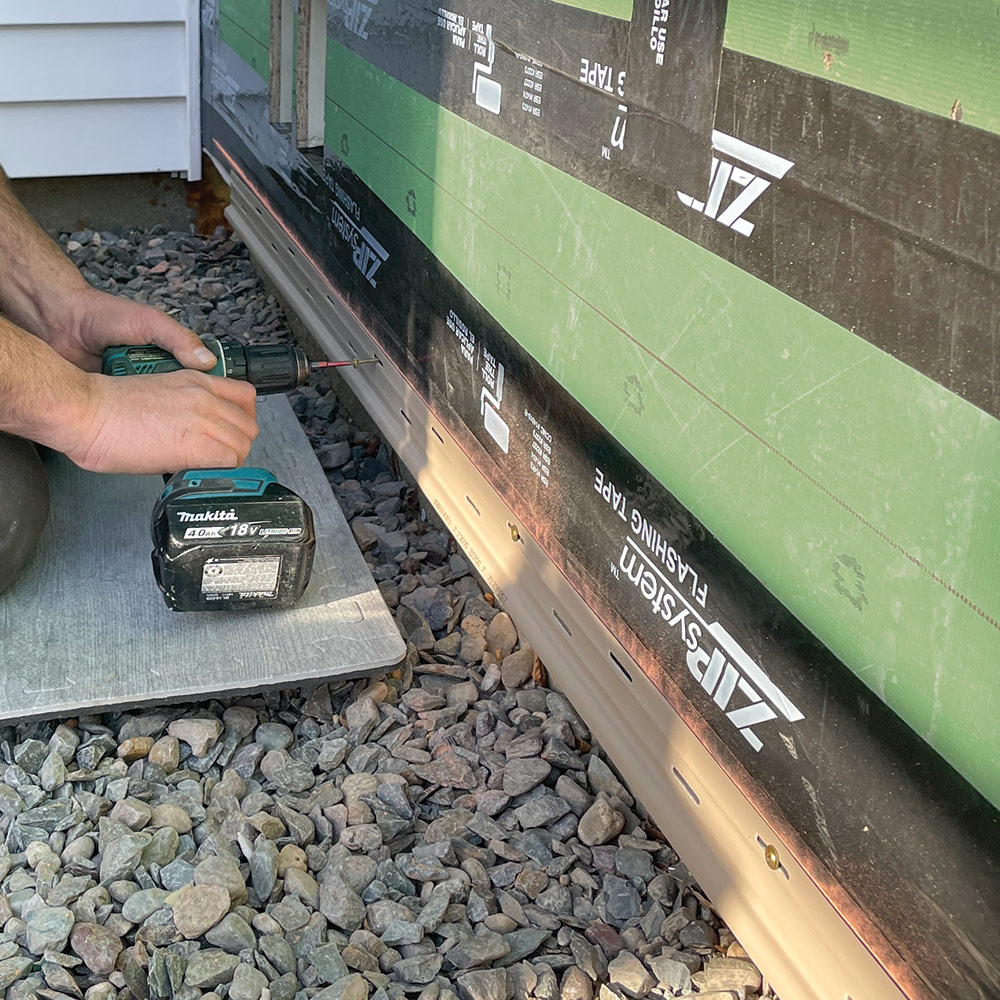
We began the vinyl-siding installation with the starter strip that holds the bottom of the first course of siding. We used a long level or laser to get the strip perfectly level before fastening it with 1-1/4-in. washer-head screws. We then installed corner trim and J-channels before installing the siding.
Line up corners
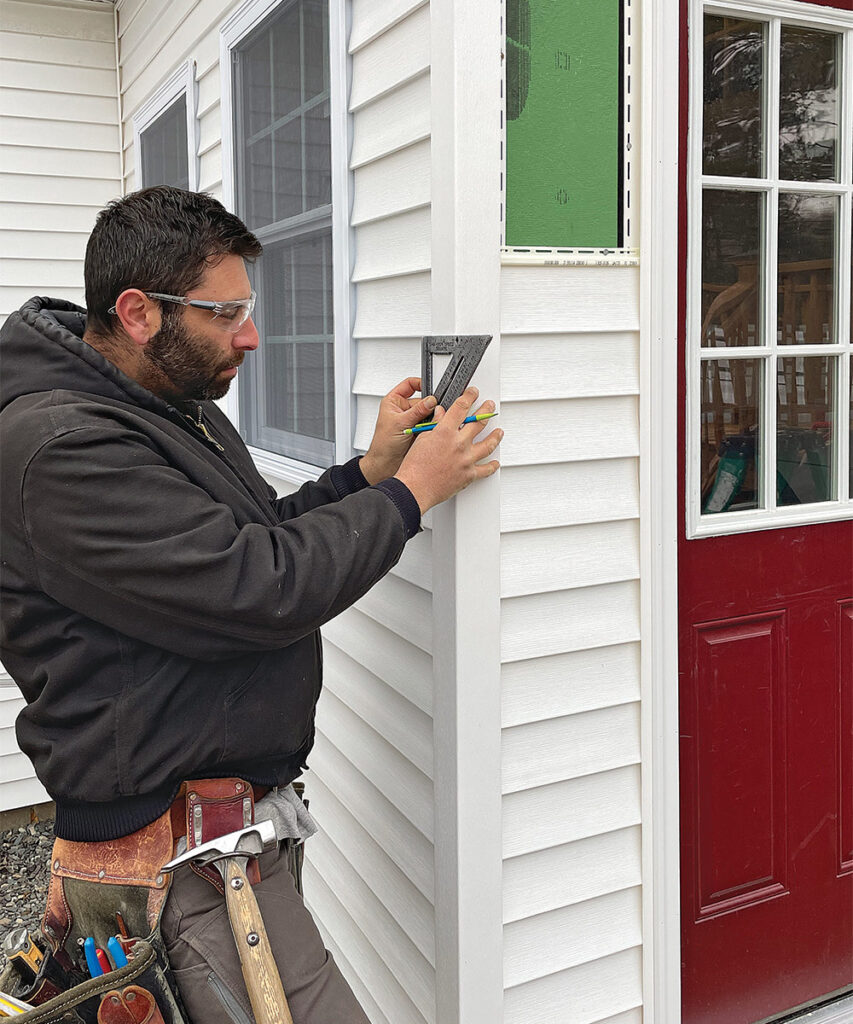
It drives me crazy to see courses of siding on different elevations that don’t align, so we took great care to line up the starter strips so that the panels would line up at inside and outside corners. Inexpensive materials are elevated with high-quality carpentry.
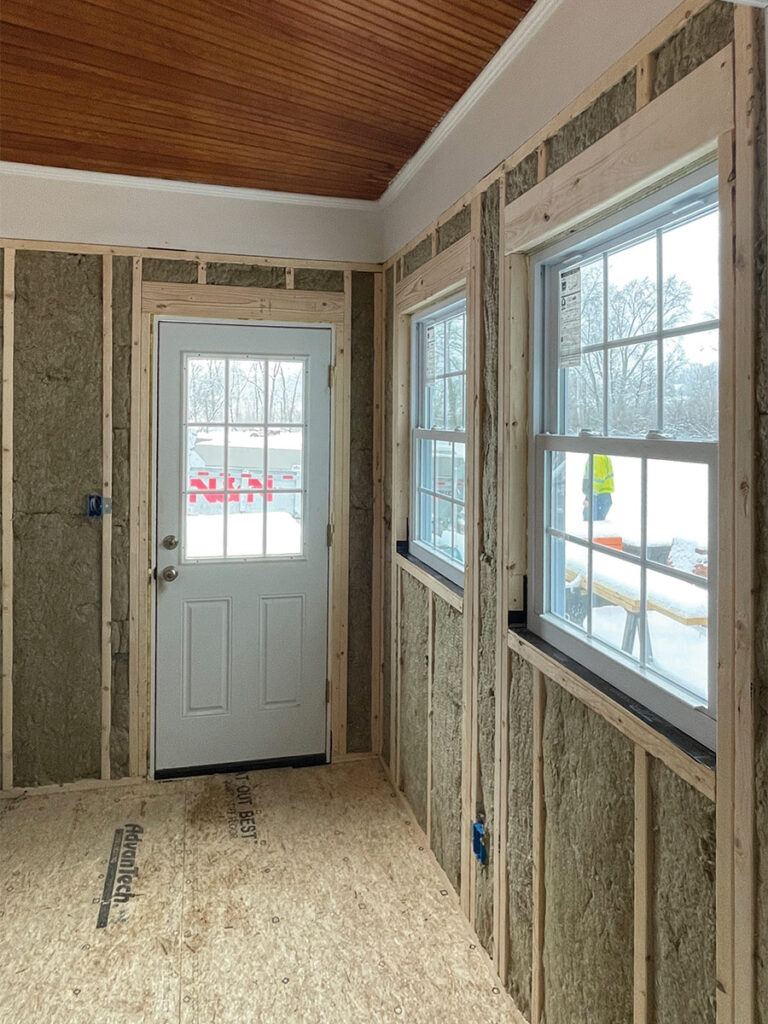
About the Author
Jeremy Kassel (@kasselconstruction) is a builder in Glenmont, N.Y.
This article was originally published on finehomebuilding.com and printed in issue 319 in November 2023.
Photos by Jeremy Kassel and Levi Kovach.
DOWNLOAD THE PDF VERSION OF THIS ARTICLE. (1.4 MB)
